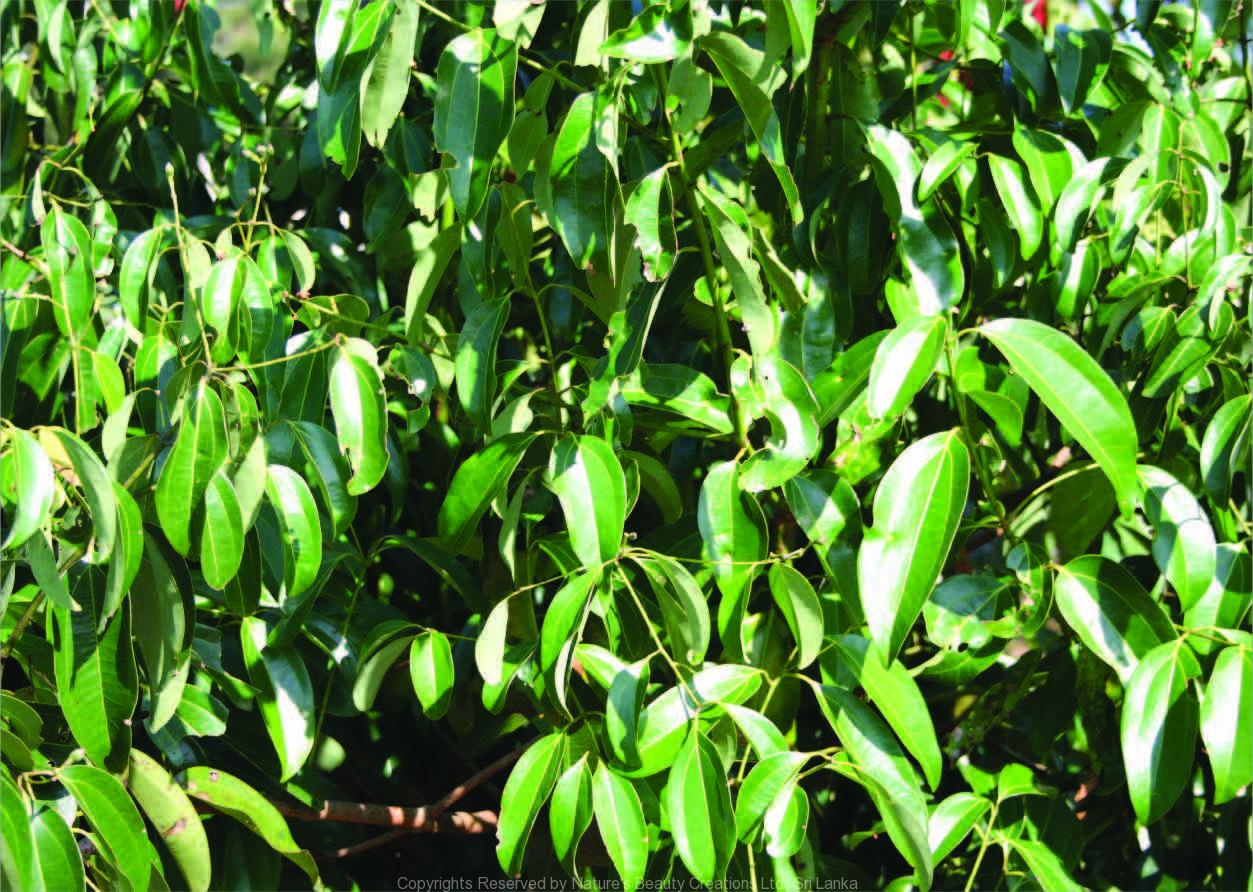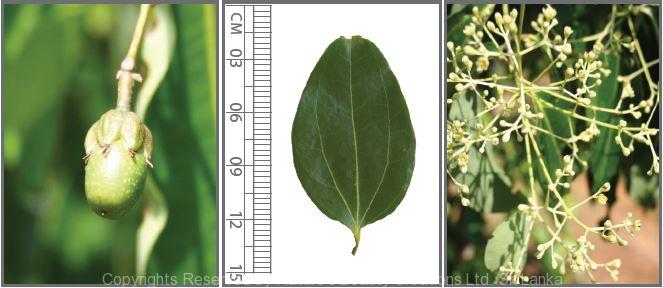

Traditional Knowledge
Useful plant parts :
Inner bark, leaf and oil
Uses in traditional medicine :
- Infusion of the dried inner bark is used as a mouthwash for gum and teeth sanitation
- Steam of leaves is inhaled to cure cough and cold
- Bark is used to treat dyspepsia, flatulence, diarrhoea, dysentery and vomiting
- Externally used for boils and abscesses
- Oil is used for rheumatism, tuberculosis, stomach cramps, toothache, cancer and paralysis of tongue
- Acts as a carminative, stimulant and an expectorant
Scientific Research
Chemical constituents:
Penolic compounds: eugenol, cinnamaldehyde and their derivatives, protocatechuic acid, terpenes: trans-β-caryophyllene, camphor, linalool, α-terpineol from essential oil of bark and leaves; tannin: cinnamtannin B–1, neolignan: urolignoside and flovonoid: quercetin glycosides from fruit powder
Bioactivity :
Essential oil from leaves and bark: antibacterial, antioxidative, hypoglycaemic, hypolipidaemic; ethanol extract of bark: wound healing; fruit extract: antioxidative, antimutagenic
Clinical:
Cinnamon tea has shown antioxidant potential
Copyrights Reserved By
Natures Beauty Creations




